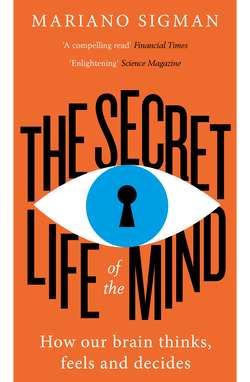Читать книгу The Secret Life of the Mind: How Our Brain Thinks, Feels and Decides - Mariano Sigman - Страница 12
Piaget’s mistake!
ОглавлениеOne of the loveliest experiments done by the renowned Swiss psychologist Jean Piaget is the one called A-not-B. The first part goes like this: there are two napkins on a table, one on each side. A ten-month-old baby is shown an object, then it is covered with the first napkin (called ‘A’). The baby finds it without difficulty or hesitation.
Behind this seemingly simple task is a cognitive feat known as object permanence: in order to find the object there must be a reasoning that goes beyond what is on the surface of the senses. The object did not disappear. It is merely hidden. A baby that is to be able to comprehend this must have a view of the world in which things do not cease to exist when we no longer see them. That, of course, is abstract.fn3
The second part of the experiment begins in exactly the same way. The same ten-month-old baby is shown an object, which is then covered up by napkin ‘A’. But then, and before the baby does anything, the person running the experiment moves the object to underneath the other napkin (called ‘B’), making sure that the baby sees the switch. And here is where it gets weird: the baby lifts the napkin where it was first hidden, as if not having observed the switch just made in plain sight.
This error is ubiquitous. It happens in every culture, almost unfailingly, in babies about ten months of age. The experiment is striking and precise, and shows fundamental traits of our way of thinking. But Piaget’s conclusion, that babies of this age still do not fully understand the abstract idea of object permanence, is erroneous.
When revisiting the experiment, decades later, the more plausible – and much more interesting – interpretation is that babies know the object has moved but cannot use that information. They have, as happens in a state of drunkenness, a very shaky control of their actions. More precisely, ten-month-old babies have not yet developed a system of inhibitory control, which is to say, the ability to prevent themselves doing something they had already planned to do. In fact, this example turns out to be the rule. We will see in the next section how certain aspects of thought that seem sophisticated and elaborated – morality or mathematics, for example – are already sketched from the day we are born. On the other hand, others that seem much more rudimentary, like halting a decision, mature gradually and steadily. To understand how we came to know this, we need to take a closer look at the executive system, or the brain’s ‘control tower’, which is formed by an extensive neural network distributed in the prefrontal cortex that matures slowly during childhood.
